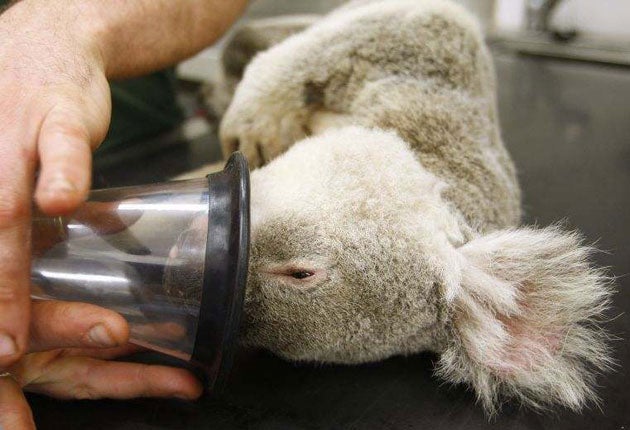Stress is pushing the koala to extinction
A virus brought on by loss of habitat is wiping out an Australian icon

The koala, Australia's star symbol, is dying of stress. The marsupial is found only along the coastal areas of eastern Australia where it feeds off the leaves of the eucalyptus tree. But, as more and more people move to the region, koalas are finding themselves with fewer trees, researchers say. The stress brings out a latent disease, called chlamydiosis, that infects 50 to 90 per cent of the population.
"Koalas are in diabolical trouble," says Frank Carrick, the researcher who heads the Koala Study Programme at the University of Queensland. "Even in their stronghold, koala numbers are declining."
Chlamydiosis is a virus that breaks out in koalas in times of stress – like cold sores in humans – and leads to infections in the eyes and urinary, reproductive and respiratory tracts. It can cause blindness, infertility and death.
The problem came to worldwide attention during the wildfires that swept across south-eastern Australia this summer when Sam the Koala, who became a celebrity after being rescued from the fires, was photographed drinking from the water bottle of a firefighter in a smouldering forest.
The koala was in such obvious pain that veterinarian John Butler decided to operate. But her organs were too scarred to complete the surgery, and Sam was euthanised.
Deborah Tabart, chief executive of the Australian Koala Foundation, has urged the government to follow up on Sam's case by classifying koalas as a threatened species and implementing policies to preserve their habitat.
The United States already considers the koala a threatened species, and the Australian Koala Foundation estimates there are fewer than 100,000 left in Australia, down from the millions that were alive when Europeans started to settle in the late 1700s.
Mr Carrick and other experts think the numbers are slightly higher, but regional counts have shown a huge drop. There is clear evidence that some local populations have become extinct because of chlamydial disease, Mr Carrick said.
The majority of koalas hug a stretch of eastern coastline in the states of Queensland and New South Wales. They are most abundant on the so-called Koala Coast, a 155 square-mile swath of semi-rural coast in south-eastern Queensland. Mr Carrick urged the federal government to get involved. "If koalas are not of national significance, I don't know what on earth would be," he said. "Koalas are right up there as an international wildlife icon with China's pandas."
Join our commenting forum
Join thought-provoking conversations, follow other Independent readers and see their replies
Comments
Bookmark popover
Removed from bookmarks